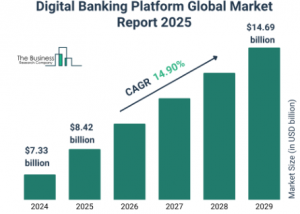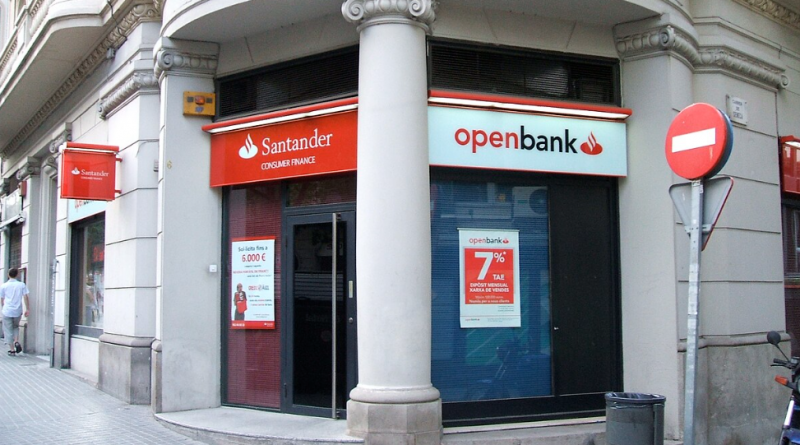Banco Santander Merges Its Digital Bank and Consumer Finance Operations
Daniel Kassim
Finance Writer
Banco Santander just did something that tells you everything about where traditional banking is headed. It merged its digital bank, Openbank, with its consumer finance operation. This is not just corporate tinkering. It’s a strategic bet on how consumers want to manage their money.
You’ve probably noticed the way that banks keep launching apps and web services. They tend to feel bolted on. Santander wants to be different. By combining these two divisions, they’re building something that’s one system, not different pieces wanting your attention.
Why This Merger Matters Now
The timing indicates what Santander prizes. Online banks have grown rapidly, but they cannot make a profit. Consumer finance, on the other hand, makes solid revenues from credit products and loans. Put them all together and you have distribution power combined with profit margins.
The numbers prove it. Openbank made €90.89 million in net profit during 2024. That matters because most digital banks still lose money. Santander Consumer Finance pulled in €1.037 billion in net profit the same year, with €3.518 billion in net interest income and €826.5 million in fee income. Add them together and you get €1.13 billion in combined profits. That gives the merger real weight.
Think about your own banking habits. You may glance at your balance in an app, but when you are shopping for a car loan, you would prefer to have options that actually fit into your budget. Santander is aware of this gap. They know that digital convenience doesn’t matter if you can’t get the financial products that you require when you require them.
This consolidation saves money, too. Running two separate technology stacks, two compliance teams, two marketing divisions wastes cash. Santander Consumer Finance operates at a 45.65% efficiency ratio. Merge the operations and that number drops further. Santander can now spend that money on creating one fantastic platform instead of maintaining two solid ones.
What Openbank Brings to the Table
Openbank has its headquarters in Spain, Germany, the Netherlands, Portugal, and Argentina. It’s not large, but it’s profitable. That matters because digital banks hemorrhage cash attempting to acquire customers.
The platform has over two million customers already. Those are not folks who downloaded an app and never returned. They are live customers who trust Openbank with their core banking relationships. That is the foundation Santander needs.
Openbank’s tech platform does it all from opening an account to making payments. It’s new, it’s fast, and it doesn’t rely on old systems most of the previous banks still use. Santander gets to distribute all this technology to a much wider base of customers without starting from scratch.
The Consumer Finance Side
Santander Consumer Finance has operations in 17 European countries and has assets over 100 billion euros. They fund the buying of cars, consumer electronics, home improvements, and personal loans. Your day-to-day stuff.
They know credit risk. They’ve spent years figuring out who to lend to and at what rate. That’s more powerful when you combine it with digital delivery. Instead of waiting days for loan approval at a dealership, you could receive a response in minutes through an app. The consumer finance segment has relationships with retailers and automobile dealerships across Europe. Those relationships create embedded finance opportunities. You buy a car, you see financing choices on the spot. You shop for a new fridge, payment plans appear when you check out. The bank goes unseen but essential.
Fee income jumped 13.3% to €826.5 million in 2024. Insurance sales drove most of that growth. Now imagine what happens when those products flow through a digital banking platform. The potential multiplies.
How You’ll Experience the Changes
This is what this merger accomplishes for you as a customer. First, you’ll see consumer finance products show up in the Openbank app. Need a personal loan? The app prequalifies you based on your account history. Want to pay for something with financing? You get offers based on your actual situation.
Second, approvals happen faster. The internet bank knows how much you make, where you spend money, and when you pay bills. The consumer finance group applies that knowledge to make smarter loans. You spend less time applying and more time getting what you need.
Third, competition gets fiercer. Traditional Santander operates through branches and standalone systems with heavy overhead. A lean digital operation carries less weight. Some of those cost savings come back to you through better rates and lower charges.

The Competition Reacts
Santander is not doing it in isolation. BBVA has already built a strong digital platform. ING focuses almost all its energy on digital banking. BNP Paribas combined its retail and digital businesses. The entire European banking sector is heading in this direction.
You benefit from this competition. Banks need to offer better products, faster service, and lower costs to keep your business. The days of accepting whatever your local branch offers are over. You have options, and banks know it.
The wave of consolidation also strikes fintech startups. Those that do nothing but electronic accounts or consumer loans cannot compete. They face institutions that do both, often with better funding and regulatory advantages. Some of the fintechs will consolidate. Others will partner with established banks. A few will fail.
What Comes Next
Santander will spend the next 12 to 18 months integrating processes and systems. You won’t see overnight, dramatic change. The bank has to migrate data, certify employees, and make sure nothing breaks in the transition.
Expect Openbank to expand into new territories. The consumer finance operation works in markets where Openbank doesn’t exist yet. Not anymore. You will see the digital bank move into France, Italy, and Nordic markets where Santander already finances consumer spending.
Watch for bundled new products. Santander can now offer checking accounts, savings, investments, and consumer loans under one umbrella. They’ll bundle them up with rewards for using more products. Better loan terms if you deposit your paycheck directly. Higher returns on savings if you finance your car through them. These tactics generate revenue and, when done right, provide genuine value.
The consolidation positions Santander for embedded finance growth. More platforms and retailers now offer financial services as part of their checkout operations. Banks need to distribute beyond their own platforms. Santander’s consumer finance partnerships provide access. The digital banking tech makes integration possible.
This combination reveals a broader truth about the future of banking. The bank that knows you best and moves fastest gets your money. Santander bets they can do both by combining digital speed with financial product depth. Execution will determine if they succeed. But the strategy is solid. You want banking that happens for you without thinking about it. That is exactly what this combination aims to deliver.
Contact Daniel at daniel.kassim@student.shu.edu

